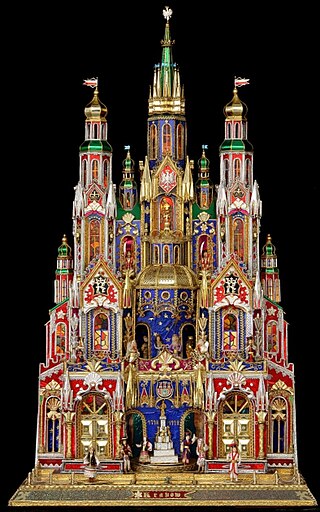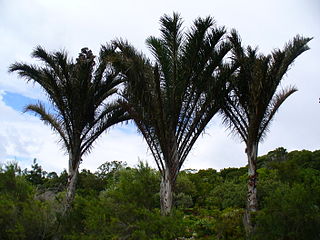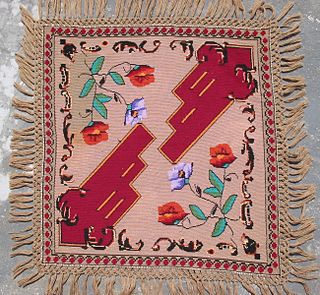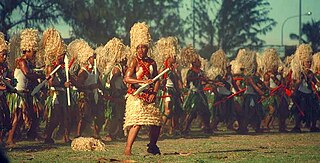
Christmas in Poland is a major annual celebration, as in most countries of the Christian world. The observance of Christmas developed gradually over the centuries, beginning in ancient times; combining old Polish pagan customs with the religious ones introduced after the Christianization of Poland by the Catholic Church. Later influences include the mutual permeating of local traditions and various folk cultures. It is one of the most important religious holidays for Poles, who follow a somewhat strict traditional custom. Christmas trees are decorated and lit in family rooms on the day of Christmas Eve. Other trees are placed in most public areas and outside churches. Christmas in Poland is called "Boże Narodzenie", which translates to 'God's Birth'.

Filet crochet is a type of crocheted fabric that imitates Filet lace. This type of crocheted lace is gridlike because it uses only two crochet stitches: the chain stitch and the double crochet stitch. Old filet patterns used a treble or triple stitch vertically but chained two between the vertical stitches. This was to prevent distortion of some patterns. Chain stitches use less yarn than double crochet stitches, which results in a visual difference in appearance between the two kinds of stitch. Filet crochet forms patterns by filling in parts of a mostly chain stitch mesh with double crochet stitches. Filet crochet is usually constructed from monotone crochet thread made of Mercerised cotton in white or ecru, and worked in rows. Filet crochet is often used for decorative applications, such as window curtains, tablecloths, and place settings, such as coasters and placemats, but can also be used to create clothing, including yokes, as well as accessories and small bags.

Microfibre is synthetic fibre finer than one denier or decitex/thread, having a diameter of less than ten micrometers.

A mat is a hard floor covering that generally is placed on a floor or other flat surface. Mats serve a range of purposes including:

Raffia palms are a genus of about twenty species of palms native to tropical regions of Africa, and especially Madagascar, with one species also occurring in Central and South America. R. taedigera is the source of raffia fibers, which are the veins of the leaves, and this species produces a fruit called "brazilia pods", "uxi nuts" or "uxi pods".

A saucer is a type of small dishware. While in the Middle Ages a saucer was used for serving condiments and sauces, currently the term is used to denote a small plate or shallow bowl that supports a cup – usually one used to serve coffee or tea.

Tableware items are the dishware and utensils used for setting a table, serving food, and dining. The term includes cutlery, glassware, serving dishes, serving utensils, and other items used for practical as well as decorative purposes. The quality, nature, variety and number of objects varies according to culture, religion, number of diners, cuisine and occasion. For example, Middle Eastern, Indian or Polynesian food culture and cuisine sometimes limits tableware to serving dishes, using bread or leaves as individual plates, and not infrequently without use of cutlery. Special occasions are usually reflected in higher quality tableware.

A tablecloth is a cloth used to cover a table. Some are mainly ornamental coverings, which may also help protect the table from scratches and stains. Other tablecloths are designed to be spread on a dining table before laying out tableware and food. Some tablecloths are designed as part of an overall table setting, with coordinating napkins, placemats, or other decorative pieces. Special kinds of tablecloth include "runners" which overhang the table at two ends only and "table protectors" which provide a padded layer under a normal tablecloth.

Fine dining is a restaurant experience that is typically more sophisticated, unique, and expensive than at an average restaurant. The décor of such restaurants features higher-quality materials, with establishments having certain rules of dining which visitors are generally expected to follow, sometimes including a dress code.

A doily is an ornamental mat, typically made of paper or fabric, and variously used for protecting surfaces or binding flowers, in food service presentation, or as a clothing ornamentation, as well as a head covering for Jewish women and Christian women. It is characterized by openwork, which allows the surface of the underlying object to show through.

A cupboard is a piece of furniture for enclosing dishware or grocery items that are stored in a home. The term gradually evolved from its original meaning: an open-shelved side table for displaying dishware, more specifically plates, cups and saucers.

The Tongan archipelago has been inhabited for perhaps 3,000 years, since settlement in late Lapita times. The culture of its inhabitants has surely changed greatly over this long time period. Before the arrival of European explorers in the late 17th and early 18th centuries, the Tongans were in frequent contact with their nearest Oceanic neighbors, Fiji and Samoa. In the 19th century, with the arrival of Western traders and missionaries, Tongan culture changed dramatically. Some old beliefs and habits were thrown away and others adopted. Some accommodations made in the 19th century and early 20th century are now being challenged by changing Western civilization. Hence Tongan culture is far from a unified or monolithic affair, and Tongans themselves may differ strongly as to what it is "Tongan" to do, or not do. Contemporary Tongans often have strong ties to overseas lands. They may have been migrant workers in New Zealand, or have lived and traveled in New Zealand, Australia, or the United States. Many Tongans now live overseas, in a Tongan diaspora, and send home remittances to family members who prefer to remain in Tonga. Tongans themselves often have to operate in two different contexts, which they often call anga fakatonga, the traditional Tongan way, and anga fakapālangi, the Western way. A culturally adept Tongan learns both sets of rules and when to switch between them.

A coaster, drink coaster, beverage coaster, or beermat is an object used to rest drinks upon. Coasters protect the surface of a table, or any other surface where a user might place a cup, from condensation created by cold drinks. A coaster on top of a beverage can also be used to show that a drink is not finished or to prevent contamination. Coasters can also stop hot drinks from burning the table surface.
Linens are fabric household goods intended for daily use, such as bedding, tablecloths, and towels. "Linens" may also refer to church linens, meaning the altar cloths used in church.

An altar cloth is used in the Christian liturgy to cover the altar. It serves as a sign of reverence as well as a decoration and a protection of the altar and the sacred vessels. In the orthodox churches it is covered by the antimension, which also contains the relics of saints.

Table manners are the rules of etiquette used while eating, which may also include the use of utensils. Different cultures observe different rules for table manners. Each family or group sets its own standards for how strictly these rules are to be followed.

Kūčios or Kūtės is the traditional Christmas Eve dinner in Lithuania, held on December 24. The meal is a family occasion which includes many traditions of both pagan and Christian origin. Some traditions are no longer widespread and usually Lithuanians just enjoy dinner with relatives and friends while the main events and festivities are left for Christmas Day.
Restaurants fall into several industry classifications, based upon menu style, preparation methods and pricing, as well as the means by which the food is served to the customer. This article mainly describes the situation in the US, while categorisation differs widely around the world.

Hidalgo (state) handcrafts and folk art are mostly made for local consumption rather than for collectors, although there have been efforts to promote this work to a wider market. Most are utilitarian and generally simply decorated, if decorated at all. The most important handcraft traditions are pottery, especially in the municipality of Huejutla and textiles, which can be found in diverse parts of the state. Most artisans are indigenous, with the Otomi populations of the Mezquital Valley being the most dominant. Other important handcrafts include basketry, metal and wood working.

Disposable tableware includes all disposable tableware like


















